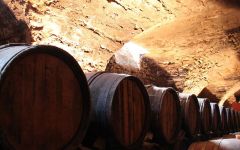Eric Texier Chateauneuf-du-Pape Vieilles Vignes Blanc 2013


Product Details
Your Rating
Somm Note
Winemaker Notes





Eric was born in Bordeaux in 1961 and has lived in or around Lyon since 1979. He was originally trained as a material scientist and spent a year studying at the Illinois Institute of Technology. In 1990, after years working in the leisure and nuclear industries, he decided to make a career of his true passion - wine.
In 1992, Éric went back to Bordeaux to formally study viticulture and oenology at Bordeaux University. When he finished he worked with Jean-Marie Guffens at Verget. Guffens, who above all respected the terroir and strived to make wines reflecting the terroir, taught Éric to use the lees to enhance the wine's natural flavors rather than discard them as byproducts of winemaking. He also taught to embrace the botrytis affected grapes to produce superbly concentrated sweet wines. And it was there that Éric developed the abilities to determine the vigneron's viticulture practices and to only buy from growers who had respected the terroir and used minimal intervention into the natural life cycle (generally organic principles of little to no herbicides, no machines, etc.).
Applying old world traditions and experience with the new world's freedom Éric made his first wine in 1995. He began in the Maconnais (a department in the Bourgogne region) and soon expanded to the Nôrthern Rhône which lead him still further south to the many Côte du Rhône villages and finally to Chateauneuf du Pape.
Today Éric produces approximately 25 unique wines each year that can be found in more than 10 countries around the world.

Full-bodied and flavorful, white Rhône blends originate from France’s Rhône Valley. Today these blends are also becoming popular in other regions. Typically some combination of Grenache Blanc, Marsanne, Roussanne and Viognier form the basis of a white Rhône blend with varying degrees of flexibility depending on the exact appellation. Somm Secret—In the Northern Rhône, blends of Marsanne and Roussanne are common but the south retains more variety. Marsanne, Roussanne as well as Bourboulenc, Clairette, Picpoul and Ugni Blanc are typical.

Famous for its full-bodied, seductive and spicy reds with flavor and aroma characteristics reminiscent of black cherry, baked raspberry, garrigue, olive tapenade, lavender and baking spice, Châteauneuf-du-Pape is the leading sub-appellation of the southern Rhône River Valley. Large pebbles resembling river rocks, called "galets" in French, dominate most of the terrain. The stones hold heat and reflect it back up to the low-lying gobelet-trained vines. Though the galets are typical, they are not prominent in every vineyard. Chateau Rayas is the most obvious deviation with very sandy soil.
According to law, eighteen grape varieties are allowed in Châteauneuf-du-Pape and most wines are blends of some mix of these. For reds, Grenache is the star player with Mourvedre and Syrah coming typically second. Others used include Cinsault, Counoise and occasionally Muscardin, Vaccarèse, Picquepoul Noir and Terret Noir.
Only about 6-7% of wine from Châteauneuf-du-Pape is white wine. Blends and single-varietal bottlings are typically based on the soft and floral Grenache Blanc but Clairette, Bourboulenc and Roussanne are grown with some significance.
The wine of Chateauneuf-du-Pape takes its name from the relocation of the papal court to Avignon. The lore says that after moving in 1309, Pope Clément V (after whom Chateau Pape-Clément in Pessac-Léognan is named) ordered that vines were planted. But it was actually his successor, John XXII, who established the vineyards. The name however, Chateauneuf-du-Pape, translated as "the pope's new castle," didn’t really stick until the 19th century.
